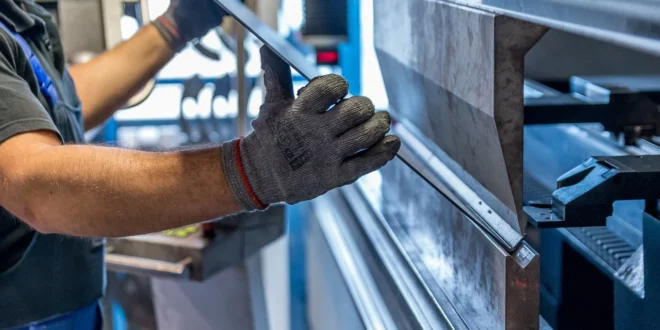Metalworking holds a vital place in modern society, serving as the backbone of various industries including construction, transportation, and manufacturing. It enables the production of intricate components for machinery, robust infrastructure, and efficient tools, all of which are foundational to our lifestyle and economy.
Moreover, advancements in metalworking techniques have resulted in improved product quality and safety, contributing to technological progress and sustainability. From the cars we drive to the buildings we live in, the relevance of metalworking is undeniable and ubiquitous.
In this document, we will delve into the basics of metalworking, providing an overview of its different processes, tools, and materials. We hope to help you gain a better understanding of this essential trade and inspire you to explore its various facets.
Types of Metalworking Processes
Metalworking encompasses a wide range of techniques and methods utilized in shaping and transforming metals into desired forms. Different processes are employed in various industries and applications, each with its unique advantages and limitations.
Casting
One of the most common metalworking processes is casting, which involves pouring molten metal into a mold to create a desired shape. This process is used to produce complex geometries, such as engine parts and jewelry.
Machining
Another widely used process is machining, which utilizes cutting tools to remove material from a metal workpiece, resulting in the desired shape. This process is often used in precision manufacturing, such as creating intricate parts for aerospace and medical industries.
Forging
Another important process is forging, which involves heating and shaping metal through hammering or pressing to improve its strength and durability. This process is commonly used in creating tools, weapons, and automotive components.
Welding
Welding is a process that joins two or more metal pieces together by melting them at the point of contact, creating a strong bond. This process is crucial in construction and repair work, as well as in creating large structures such as bridges and ships.
Sintering
So, if you’ve never heard of what metal sintering is, you’re not alone. Sintering is a process that involves compacting metal powder into a desired shape and then heating it until the particles bond together, creating a solid piece. This method is commonly used to produce small and intricate components for industries such as electronics and medical devices.
Tools Used in Metalworking
To carry out these different processes, various tools are utilized, each designed for a specific task. Some common tools used in metalworking include:
- Hammers and Mallets: Used to shape metals through forging or bending.
- Chisels and Files: Used for precision cutting and smoothing of metal surfaces.
- Drills and Lathes: Used for drilling holes or creating rotating parts with high accuracy.
- Welding Equipment: Used to join metal pieces together through welding.
- Saws and Grinders: Used for cutting and shaping metal workpieces.
Commonly Used Metals
Different types of metals are used in metalworking, each with its unique properties and characteristics. Some of the most commonly used metals include:
- Steel: Known for its strength, durability, and versatility, steel is one of the most widely used metals in metalworking.
- Aluminum: Lightweight and corrosion-resistant, aluminum is commonly used in industries such as aerospace and construction.
- Copper: Known for its excellent electrical and thermal conductivity, copper is commonly used in electronics and wiring.
- Brass: A combination of copper and zinc, brass is often used in decorative applications due to its golden appearance.
- Iron: One of the oldest and most abundant metals, iron is commonly used in construction and manufacturing industries.
Now that you have a basic understanding of metalworking processes, tools, and materials, we encourage you to continue exploring this vast field. With ongoing advancements in technology and techniques, metalworking continues to evolve and play a crucial role in our society. So next time you see a building or a machine, take a moment to appreciate the skilled work that went into creating it through metalworking.
Did you learn something new from this article? If so, be sure to check out our blog for more technology content.
 SlushWeb Live the Way You Love
SlushWeb Live the Way You Love


